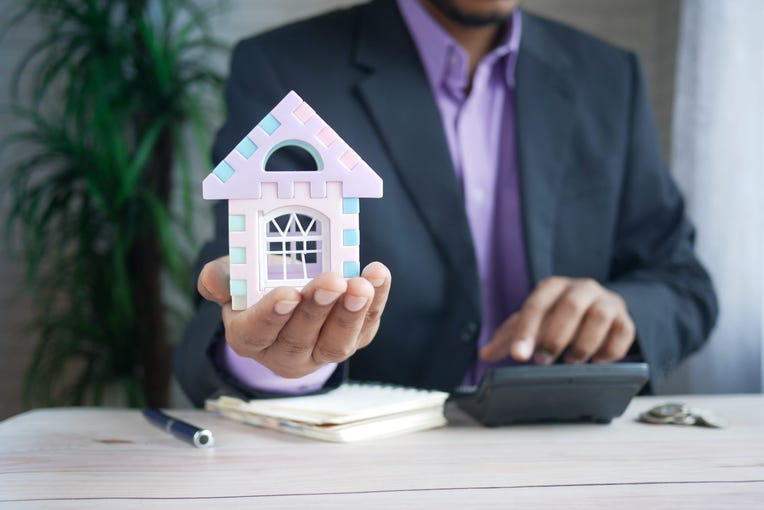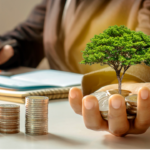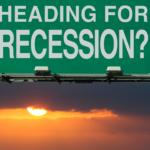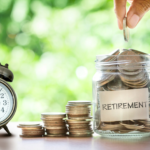Owning property has long been referred to as the Great Australian Dream, but research has revealed what we have all long suspected: it’s no longer just a dream, it’s an obsession. According to 2019 research by HSBC bank, Australians spend an average of 2.5 hours a week focused on property, more than twice the time they spend at the gym (1.08 hours) or speaking to their parents (0.88 hours).
With the Australian property market worth $9.98 trillion in the June quarter of 2022 following data released by the ABS in September, it’s clear those hours of obsession have turned into a popular source of wealth building for Australians–even despite the market decline from the record-high figure of $10.14 trillion in the March quarter.
In fact, property is an even more popular investment than shares, with the most recent value putting the property market at more than four times the Australian sharemarket–which has a market capitalisation of around $2.47 trillion.
Adrian Kelly, immediate past president of the Real Estate Institute of Australia, says this comes down to Australians viewing property as a “more stable life raft” than the turbulent stock market.
“Many people wary of the stock market’s peaks and valleys are more inclined to put their hard-earned savings into bricks and mortar,” Kelly says, a perspective that grew following the collapse of the stock market in the early 2000s.
Following the GFC, the notion of a stable property market began to strengthen, as Australians–and the RBA–recognised the role housing and housing finance institutions could play in helping to prevent future crises.
This has caused a degree of concern among younger buyers and some policy makers, who argue that property’s generous tax breaks turn something as basic as shelter into an unaffordable, speculative asset class. Many baby boomers, who retired before they could make the most of the superannuation scheme that was introduced in 1992, claim they are investing in property to make up for a lack of retirement funds.
In any case, more and more Australians are jumping on board the wealth-building potential of property. Here’s what you should know before throwing your hat in the ring.
The Pros of Investing in Property
Of course, there are a number of issues worth weighing up before you decide whether to invest in property. Some of these are positive factors for investors, such as:
Low Barrier to Entry
Property is often seen as less of a risk compared to other investments, often because it doesn’t require any particular specialised knowledge, such as what is required in a niche market–such as NFT trading or buying and selling cryptocurrencies. It also comes with ample benefits such as capital gains, rental yield, and tax deductions, which we’ll explore below.
Capital growth on property
Capital growth refers to the increase in value of your property over time, which is calculated by comparing the current market value with your initial purchase price. For example, if you purchased a property for $500,000 ten years ago and it is now worth $900,000, you’ve made $400,000 in capital.
Australian property investors have traditionally enjoyed high capital gains returns. According to the latest CoreLogic Pain & Gain report, which consolidates data from approximately 102,000 resales in the quarter, 93.8% of those sales made a profit.
“This was steady in the March quarter but has moved lower from a recent high of 94.1% in the three months to April 2022,” the report reads.
Overall, the median gain for sellers during the quarter was $270,000, while the median loss was $33,500.
Rental yield
While capital growth will take years and even decades to hit your bank account, rental yield offers more immediate rewards.
Ultimately, rental yield is the difference between the income you receive from tenants minus the overall costs of your investment.
If your intentions are to rent out your property to tenants, then it is paramount that you consider the investment property’s potential rental yield.
As Lilly Schneider, an investment property advisor with Abercromby’s explains, a rental yield between 6-11% would be considered a good return for an investment.
However, rental yield will differ from state to state.
“Generally rental yields are higher in capital cities than in regional or metropolitan areas, although a significant shift in lifestyle as a result of the pandemic has resulted in a notable change in the past 24 months for certain areas of the country,” Schnieder says.
Additionally, investors may find that properties with good rental yield tend to be less expensive to purchase than those in areas promising good long-term capital gains. This means that the costs associated with a purchase, such as tax and mortgage repayments, will also be less overall.
Investment in a physical asset
For some, a major driving factor for investing in property is that it is a tangible, physical asset. Unlike shares, individuals can see their investment in its physicality. They can drive past the property whenever they like; they can fix whatever is broken.
This tangibility “provides the confidence and total control for investors, something which isn’t guaranteed when investing in the stock market”, Schnieder explains.
Tax deductions
If you rent out your property, you can claim deductions for most of the expenses you incur in these periods.
Enter the negative gearing tax break. As the ATO explains, your rental property is ‘positively geared’ if your deductible expenses are less than the income you earn from the property. If your deductible expenses are more–and therefore you do not make a profit from renting out your property–then it is said to be ‘negatively geared’.
Speaking with Forbes Advisor, Pina Brandi, director of PB Property, explains that the tax break for negative gearing was made available in the ’80s to boost construction and help the government accommodate Australia’s growing population.
“Australians benefit from negative gearing because the government doesn’t have resources to provide adequate volume of accommodation to the burgeoning population, let alone affordability schemes and incentives,” Brandi explains.
“By adding tax incentives for investors, [the government has created] a stimulus to investors to buy and support the construction of more dwellings. This translates into more jobs, more service providers, more opportunities and keeps the country developing.”
The capital gains tax discount is another tax incentive investors enjoy. The CGT discount was introduced by the Howard Government in 1999, and allows individual taxpayers to reduce their CGT by 50% if the asset–including property–has been owned for at least 12 months.
However, it is important to note that if the asset is your home and you first started using it for rental or business purposes less than 12 months before disposing of it, you are unable to claim the CGT discount.
Cons of Property Investment
Then, of course, there are the downsides to consider, including
The Risks
Despite the many perks to investing in property, there are some more difficult aspects that potential investors need to consider before jumping into the market.
This includes the fact that you can’t simply decide to invest in property; there are ample fees, entry costs and decisions to be made before a property can be purchased.
Here is an explanation of some of the cons involved with property investment.
Difficult–and costly–entry and exit
Unlike shares, the property market is both financially difficult to enter and exit. There are extensive entry expenses, including stamp duty, legal fees and real estate agent fees, which we explain more in depth below.
You also cannot sell your property off in a hurry if you need cash quickly, which you can do with shares.
Fluctuating Property Market
While the property market isn’t anywhere near as volatile as the stock market, it does still fluctuate in its value over time. And, as property is a long-term investment, it is likely that an investor will see their property move up and down in value.
In fact, in July 2022, the average home value had moved -2.0% lower than the peak in only a couple of months from April 2022, CoreLogic reports.
So although buying in a dip may seem enticing to potential investors, it also poses serious risks: such as more expensive mortgages, higher interest rates, and less competition in the market encouraging vendors to choose not to sell at all.
The COVID-19 pandemic has also raised concerns for the Australian property market, with investors wary that the current bubble may burst.
Schnieder says “without a doubt” that there could be a fallout of the current property bubble; however, she believes it’s “unlikely to be a complete meltdown of the market and values”.
“Fixed rates next year could get reassessed, and we’ll probably see a bit of a shift with people having to pay back more on their mortgages with no real growth in wages to support that…” Schnieder acknowledges.
It’s clear that the current fluctuations of CPI, inflation and wage growth weigh heavily on the property market, causing it to fluctuate heavily itself.
Need to find tenants and property managers
While rental yield is a convincing prospect for potential investors, it comes with its own set of challenges: finding the tenants to pay said rent on a consistent basis. Along with the tenantship, there are then management costs and requirements associated with renting a property. There will be periods when the property is empty and you will need to find new tenants, and this potentially could mean covering the cost of the mortgage on your investment entirely on your own.
Some may choose to manage the rental aspect of their investment property themselves; however, it is most common to outsource to a property management company. In doing so, the investor is then looking at another ongoing cost.
What Type of Property Makes a Good Investment?
There are many perks to owning a property, but it’s also a decision that should not be taken lightly. It’s important to consider where you want to invest in a property, and what type of property is best for investment.
House vs apartments
According to Schnieder, choosing to invest in a house or an apartment is completely dependent on the intentions of the investor.
“It’s important to do your calculations before purchasing an investment property and looking at the rental yield and return you’ll get on the investment, as well as keeping in mind the costs associated with owning property,” she says.
“For example, a $2 million 3-bedroom penthouse apartment might rent out for $1,500 per week, whereas a $2 million 3-bedroom house in the same suburb might only fetch a rent of $850 per week.
“If your intention to purchase the property is to renovate or even knock down and re-build down the track then the rental yield might not be the biggest concern for investing and rather making a profit on the property, therefore capital gains will be the most important factor.
“If the property is purchased based on the intent of generating an instant source of rental income, the investor is going to try achieving the best possible rental yield on that property.”
Therefore, the choice between a house or an apartment comes down to first choosing what your purpose of investing is: capital gains or rental yield.
Owner-occupied or rental properties?
Commonly, an investor looking to simply invest for capital gains may choose to live in the property they have invested in. Meanwhile, investors looking to make money off rental yield would have their property tenanted.
In terms of profitability between owner-occupied or investor resales, CoreLogic’s latest research explains that while the national rate of profit-making sales stands at 93.7%, there is a significant difference between owner-occupied and investor resales.
In the June quarter, investors were around 35.8% more likely to have a loss-making sale through the quarter. If any profit were made, the median nominal gains were also lower ($223,000) than those for owner-occupied resales ($348,000).
This variance between investing in property for residential purposes before selling, compared to solely investing as a capital growth and rental yield investment is an important consideration for interested investors. It can help the investor to consider what type of property to buy, and in what location.
What Suburbs Are Best?
It’s speculative to choose what suburbs in Australia are best for investments, because once again, it is largely dependent on the investor’s circumstances and goals. Each state, capital city and regional location will have various growing suburbs, so it’s important that significant research is undertaken. Even then, you can only predict so much. Who could have known that regional cities would boom as a result of a global pandemic?
However, traditionally most experts have recommended staying within the first 10km of the CBD, as this can offer both good rental yield and long-term capital gains, depending on your investment goals. This may have changed somewhat since the pandemic as working from home has become more popular and there is less reason to commute into the CBD, however, it remains that the suburbs that are close to the CBD are well-established and often highly desirable places to live.
It is also worthwhile to consider the proximity to schools, as this is a large benefit when selling to families; train lines and highways, as noise pollution can affect your property’s value; and other factors of the suburb that could make your property more attractive when it comes to sell, such as a suburb that is close to supermarkets and transport or a suburb that is near a beach.
Additionally, many property advisors also do not recommend speculative investing in mining towns that are rumoured to be seeing a boom in growth, nor taking part in “hot spotting”, which is a strategy that sees investors purchase property in suburbs before they become popular. Avoid the hard sales talk and hot spotter spruikers, as while there is a chance you could get lucky and buy into a suburb on the cusp of gentrification, there is no guarantee.
What to Avoid When Investing in Property
Along with avoiding the aforementioned highways and train lines that may put off prospective tenants or buyers, Brandi also urges investors to “avoid cutting corners”.
“Some investors don’t want to spend money with the correct reports, professional services or due diligence,” Brandi says.
Schnieder agrees with this sentiment, saying that “speaking with financial planners, mortgage brokers and real estate professionals will help give you an idea on the best property to purchase as an investment which fits in your investment intentions”.
Ask yourself the following questions before jumping into an investment property, Schneider says:
- Do you plan to move in one day?
- Do you only ever plan to rent out the property to earn a passive income?
- Is this a first home purchase to get into the market?
- Do you plan to renovate/upgrade the house to then sell it for a profit?
How Much Can I Borrow?
To find out how much you can borrow, you need to talk with your bank. The bank will calculate your borrowing power based on how many people will be going in on the loan; how many dependents you have; whether you are living in the property first or solely using it as an investment; whether the property is already built; the state you are buying in; and your current salary.
It’s important to know that choosing to borrow money from the bank for an investment is “risky business”, according to the Australian government-backed Moneysmart website. Investment loans are also more expensive than loans for owner-occupied properties.
While borrowing to invest can give you access to more money, it also has more risks, such as bigger losses and higher interest rates.
It is always best to speak to a mortgage specialist to decide which loan is best for you.
The Costs of Investing in Property
There are many more costs involved than just the sole purchase price or mortgage repayments when investing in property. Common investment costs are explained below.
Stamp duty
Stamp duty, also called land transfer duty, is the cost of transferring a property from one owner to another. It’s a compulsory, state-imposed tax, meaning that the cost of it varies from state to state. The time required to pay stamp duty also varies depending on which state you have purchased property.
Stamp duty is calculated depending on the dutiable value of a property (generally the purchase price or market value of the property); the date of purchase; whether you are an Australian or overseas investor; if the property is a new home, an established home, or vacant land; if it will be your primary residence; and if it is your first property purchase.
To find out how much stamp duty you will need to pay, each state government offers a stamp duty calculator online.
Conveyancing and search fees
In a nutshell, conveyancing is the legal work involved in buying a property and the transfer of ownership from the vendor—or seller—to the buyer. It protects the buyer against nasty surprises in the future and ensures they’re aware of any potential issues with the property before they commit to the purchase.
However, conveyancing costs money, and conveyancing fees are split into two parts:
Legal fees charged by the solicitor. According to the Australian Institute of Conveyancers (AIC), conveyancing fees typically vary from $700-2500, although they can be higher for more complex transactions such as leasehold properties. You’ll usually have to pay conveyancing fees even if your purchase fails.
Disbursements charged by third parties for various searches and legal documentation. Examples include certificate of title search, mortgage registration, and inspection fees.
It’s important to note that each Australian state and territory is governed by their own individual divisions of the Australian Institute of Conveyancers, and therefore may have different pricing costs and agreements.
Property inspections
No matter what type of property you are purchasing, it’s paramount that you have it inspected by a qualified building inspector. This will check for minor and major defects, quality of construction, structural integrity, moisture issues and the potential for termites. While costs vary depending on the size of the property and the inspector’s call out fees, investors should expect to pay between $500-$800.
Additional ongoing costs
There are also a multitude of ongoing costs that individuals need to be aware of before investing in property. These include council and water rates; building insurance; landlord insurance; body corporate fees if you are buying an apartment or villa; land tax; property management fees; and maintenance costs.
Final Word
With the initial cost and the ongoing requirements, potential investors need to be aware that investing in property cannot guarantee income.
And while the falling property prices across the nation’s capital city may seem like an enticing prospect to buyers, it’s important to do your research, talk with experts and specialists, and consider your personal finances before jumping on the property-owner bandwagon.
This article was written by Sophie Venz and was originally found here: Guide to buying an investment property in Australia – Forbes Advisor Australia
















